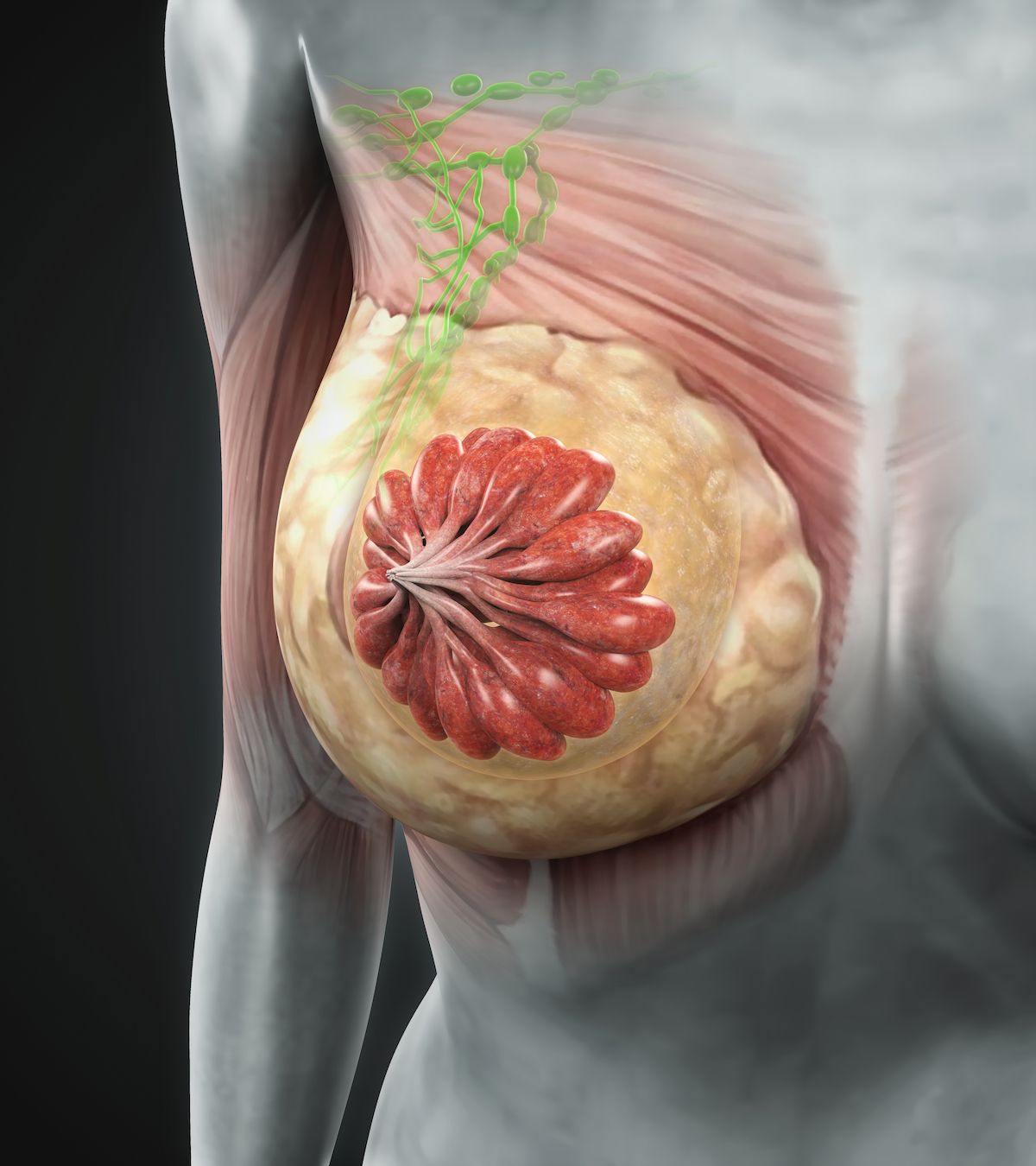Hypofractionated Vs Standard RT Yields Similar Toxicity in Breast Cancer
Data from the FABREC trial support the use of hypofractionated postmastectomy radiotherapy in patients with breast cancer following implant-based reconstruction.
"Our results support the use of hypofractionated radiation therapy for patients with implant-based reconstruction," according to Rinaa Punglia, MD, MPH, FASTRO.

Treatment with hypofractionated postmastectomy radiotherapy (PMRT) produced similar changes in physical wellbeing and toxicity as conventionally fractionated PMRT in patients with breast cancer, although hypofractionated PMRT yielded some specific quality of life (QOL) improvements, according to findings from the FABREC trial (NCT03422003) presented at the 2023 American Society for Radiation Oncology (ASTRO) Annual Meeting.
In a multi-variate analysis, investigators highlighted that postoperative infection (HR, 3.19; P = .02), the number of removed nodes (HR, 1.06 per node; P = .008), radiation administered to a tissue expander compared with implant (HR, 4.44; P = .043), and treatment with preoperative endocrine therapy (HR, 2.80; P = .001) independently correlated with chest wall toxicity. Additionally, the use of hypofractionated vs conventional fractionation radiotherapy did not correlate with time to chest wall toxicity (HR, 1.19; P = .63).
After controlling for patients younger than 45 years vs those 45 years and older, investigators reported that hypofractionated PMRT increased patients’ physical wellbeing score by 0.20 points (95% CI, –0.80 to 1.18; P = .70) at 6 months. The Analysis highlighted a significant relationship between fractionation schedule and patient age with respect to physical wellbeing outcomes (P = .02).
“Younger patients [randomly assigned] to hypofractionation had higher physical wellbeing scores than those [randomly assigned] to conventional fractionation,” Rinaa Punglia, MD, MPH, FASTRO, an institute physician in the Department of Radiation Oncology at Dana-Farber Cancer Institute and an associate professor of Radiation Oncology at Harvard Medical School, said in a presentation on these findings. “Looking at the specific questions which comprise the physical wellbeing score, we found that younger patients [randomly assigned] to hypofractionation were less bothered by [adverse effects] of treatment at 6 months relative to their counterparts who received conventional fractionation.”
Among 51 patients who took unpaid time off from work for treatment, those who received conventional fractionation PMRT had a mean of 125.8 hours of unpaid time compared with 73.7 hours for those who received hypofractionated PMRT (P = .046).
“Our results support the use of hypofractionated radiation therapy for patients with implant-based reconstruction,” Punglia said.
In the FABREC study, 400 patients with stage 0 to III breast cancer underwent mastectomy plus immediate implant-based reconstruction between March 2018 and November 2021 at 16 institutions. Patients were randomly assigned 1:1 to receive 25 fractionations of 200 cGy or 16 fractionations of 266 cGy to the chest wall with or without internal mammary nodes plus 23 to 25 or 15 fractions to the supraclavicular lymph nodes. In total, patients assigned to conventional fractionation received 50 Gy to the chest wall plus 46 to 50 Gy to lymph nodes, while those assigned to hypofractionation received 42.56 Gy to the chest wall plus 39.90 Gy to lymph nodes.
The study’s primary end point was improvement in physical wellbeing scores based on Functional Assessment of Cancer Therapy - Breast (FACT-B) version 4 criteria at 6 months, which investigators controlled for age. Additionally, investigators assessed chest wall toxicity, which was defined as any grade 3 or higher toxicity following radiation.
Overall, 201 and 199 patients were randomly assigned to receive conventional fractionation and hypofractionated PMRT, respectively. The median patient age was 47.0 years (range, 23-79). Additionally, most patients had hormone receptor–positive disease (84.2%), received neoadjuvant chemotherapy (67.8%), and had prepectoral placement of reconstruction device (58.4%).
Investigators reported a median time of 2.6 months between surgery and initiation of PMRT. Additionally, 41.3% and 57.4% of patients underwent intensity-modulated radiotherapy and 3D-conformal radiotherapy, respectively. Overall, 7.7% of patients assigned to conventional fractionation experienced a treatment break for an average of 3.3 days, and 2.7% of those who received hypofractionated radiation had a treatment break for an average of 2.8 days (P = .03).
Investigators assessed 385 patients with a median follow-up of 40.4 months (range, 15.4-63.0). Additionally, 23 patients experienced distant recurrence, 4 died with distant recurrence, 2 had local recurrence, and 4 experienced pneumonitis. Chest wall toxicity occurred in 39 patients, including 19 who received conventional fractionation and 20 who received hypofractionation (P = .80).
Reference
Wong JS, Uno H, Tramontano A, et al. Patient-reported and toxicity results from the FABREC study: a multicenter randomized trial of hypofractionated vs. conventionally-fractionated postmastectomy radiation therapy after implant-based reconstruction. Presented at: 2023 American Society for Radiation Oncology Annual Meeting (ASTRO); October 1-4, 2023; San Diego, CA. Abstract LBA05.